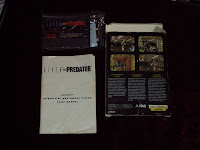Nintendo 64 Limited Edition Green

The N64 owes its existence to Silicon Graphics (SGI) and MIPS Technologies, who were responsible for the R4300i microprocessor and the 3D graphics hardware used in the N64. SGI had recently acquired MIPS Computer Systems, and the two worked together to create a low-cost real-time 3D graphics system. The SGI project was originally offered to Thomas Kalinske, then CEO of Sega of America, by James H. Clark, founder of Silicon Graphics. Sega of Japan's evaluation of the early prototype uncovered several unresolved hardware-issues and deficiencies. They were subsequently resolved; but not before Sega had already decided against SGI's design.In August of 1993, Nintendo expressed interest in SGI's work, and "Project Reality" was born. An official announcement regarding their collaboration was made in October of 1999. Nintendo's code name for the N64, "Project Reality", stemmed from the bold belief that the hardware's advanced CGI capabilities would riva




